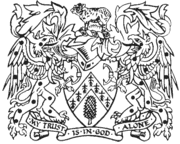John Hobby, Haberdasher, instructed his executors to purchase lands with an annual rental income of £170. His intention was that this money would be settled on fourteen trustees and their heirs.[1] Seven of the trustees would be from Christ’s Hospital, with the other seven being Assistants of The Clothworkers’ Company. Hobby stated that forty pounds from the rental incomes of these lands and tenements would be used for numerous charitable causes.[2] The properties were purchased in Plumstead, Woolwich and Watford, with control passing to The Clothworkers’ Company in 1674.
The Clothworkers’ Company Court Orders only make one reference to the Woolwich property during the period of this study. This gives some insight into the leasing and improvement of the property. In August 1683, Widow Essex received a lease of the property, with the Company allowing her three pounds (a half year’s rent) to build a barn on the premises.[3] They laid down specific instructions for the size of the barn, requesting that it be fouteen foot wide or equal to the width of a dwelling house, and thirty foot long.[4] They instructed that the barn had to be substantially built with good timber boards and that it should be tiled.[5] The Court granted an abatement of twenty shillings rent per annum from her existing lease on condition of her building the barn and keeping it in good repair for a period of twenty-one years.[6] The Company retained control of the Woolwich estate until 1959, when the estate was sold.[7]
Individual associated with this property
- - Essex, Leaseholder, 15-8-1683. Document reference: CL/b/1/11/p.6 (Woolwich)
Kent
[1] TNA PROB 11/347, Will of John Hobby, 12 March 1675.
[2] Ibid.
[3] CCA, Court Orders, CL/B/1/11, p. 6, Repair of the Woolwich property, 15 August 1683.
[4] Ibid.
[5] Ibid.
[6] Ibid.
[7] A. Buchanan, ‘The Sources of the Wealth of The Clothworkers’ Company’, unpublished paper
